About This Project
Toxic synthetic chemicals such as pesticides and pharmaceutical residues are a major threat to drinking water safety worldwide. Low-cost, environmentally sustainable and locally managed treatment technologies are needed to protect human health in impoverished, rural and remote communities. This research project demonstrates the potential of char made from surplus biomass (biochar) as an effective sorbent for chemical toxins.Ask the Scientists
Join The DiscussionWhat is the context of this research?
Biochar is produced from heating biomass in a restricted oxygen environment. Traditionally this process has been used to generate cooking charcoal. Our lab and field research has shown some traditional charcoals to exhibit significant sorption capacity for herbicide. However, traditional charcoal production systems are energy inefficient and highly polluting.
We have shown that highly adsorbing biochar can be produced from surplus biomass using low-tech, efficient and environmentally friendly gasifier drum ovens. They are constructed from common, inexpensive local materials using only simple hand tools and without the need for electricity.
Our next step is to collect pollutant sorption data using lab micro-columns that can be scaled up to predict real world biochar adsorber performance.
What is the significance of this project?
Exposure to synthetic chemical contaminants (SCCs) such as pesticides and human/livestock pharmaceutical residues in drinking water has been linked to cancer, birth defects, reproductive disorders, endocrine disruption, neurological dysfunctions, damage to internal organs, and a wide variety of other deleterious health effects.
Unfortunately, major international water development initiatives focus exclusively on microbial pathogens (the most immediate threat to health) while neglecting SCCs.
This project advances sustainable and locally managed treatment systems employing adsorbent biochar as an effective, affordable and accessible means for providing drinking water that is microbiologically and chemically safe to households and communities in remote and impoverished regions of the world.
What are the goals of the project?
Using a modeling approach, we have developed rapid laboratory micro-column tests that provide scalable pollutant sorption data. These data can predict the performance of full-scale biochar units treating surface waters.
This is crucial for informing the design and operation of real-world treatment systems incorporating biochar to ensure production of safe water.
With this funding, we will purchase chemical reagents and laboratory hardware and supplies for carrying out a campaign of micro-column pollutant sorption studies investigating a wide range of low-cost, sustainably generated biochar adsorbents.
Our findings will be published in peer-reviewed journals, as well as made available in popular, accessible format (including translation into several languages) through aqsolutions.org.
Budget
To complete this project, we need to purchase pesticide and pharmaceutical contaminant reagents for use in laboratory micro-column tests.
The reagents are expensive because they are labeled with radio-chemical tags. The tags allow us to detect the contaminants at very low levels (parts-per-trillion!) when they are dissolved along with background natural organic matter in typical surface waters.
The particular test compounds we select for column experiments will be based upon:
(1) their widespread use, environmental persistence, and frequent detection in water sources,
(2) their associated deleterious human health impacts, and
(3) their difficulty to remove from water by adsorption relative to most other synthetic chemical contaminants.
Point (3) signifies that if treatment using biochar is effective for removal of our selected challenge compounds, it will likely also be very effective for removal of a host of chemical water pollutants.
We will also purchase special kits for detection of our target compounds using an alternative biochemical method. These kits will be used as a cross-check to verify our primary quantitation protocol.
The kits offer the additional capability for compound detection in the field, and will be used to validate our modeling and scale-up approach for translating laboratory data to predict the performance of real-world biochar treatment systems.
We also require a small budget for lab micro-column hardware, and supplies such as tubing and sampling equipment.
Meet the Team
Team Bio
I started working on sustainable, low-cost water treatment while living with a small farming community in northern Thailand, near the border of Burma. The community did not have secure access to drinking water and wanted to use local surface water sources but were concerned about agrochemical runoff. They approached me to help them design a treatment system based on traditional methods using locally produced charcoal, and that's where it all began.I soon discovered that no scientific research had been performed on the use of local chars for control of pesticides and other organic chemical toxins in drinking water. It was then that this project became my mission in life.
As far as hobbies go, I enjoy trail running, cycling, swimming, backpacking and bicycle touring. I am an enthusiastic beer homebrewer, and an equally enthusiastic craft beer drinker. Rumor has it that I am also a decent bluegrass mandolin player.
Josh Kearns
My name is Josh Kearns and I hold bachelor’s degrees in chemistry and environmental engineering from Clemson University and a master’s degree in environmental biogeochemistry from the University of California-Berkeley. I am currently a PhD Candidate at the University of Colorado-Boulder in environmental engineering, and a visiting researcher at North Carolina State University. My research explores the applicability of locally produced biomass char (biochar) as a low-cost adsorbent for drinking water treatment in developing communities.
I have previously studied and worked in the fields of ecological economics and sustainability science, both within academia and in the non-profit/NGO sector. A desire to promote health, livelihood security, environmental and economic sustainability, and local self-reliance led me to found Aqueous Solutions in 2007 – a non-profit organization dedicated to research, development, and deployment of appropriate technologies in water and sanitation. As a founder's prerogative, I gave myself the vague and modestly important-sounding title, "Director of Science."
My work allows me to learn from and with top-level University research scientists on one hand, and dedicated, creative, and brilliantly competent field practitioners of public health, rural livelihood security, sustainability and social justice, on the other. For this I am fortunate and grateful.
As far as hobbies go, I enjoy trail running, cycling, swimming, backpacking and bicycle touring. I am an enthusiastic beer homebrewer, and an equally enthusiastic craft beer drinker. Rumor has it that I am also a decent bluegrass mandolin player. Most of all, I like to spend time with my wife, Rachael, who is training to be a farm animal veterinarian.
Press and Media
Please see Aqueous Solutions, in particular our page on charcoal / biochar water treatment where you'll find open-access video and print resources in several languages.Making "low-tech" biochar adsorbent for decentralized water treatment, Chemists Without Borders.
An ancient filtration material removes pesticides from drinking water, Engineering for Change.
Selected publications:
Kearns JP, Knappe DRU, Summers RS. (2014) Synthetic organic water contaminants in developing communities: an overlooked challenge addressed by adsorption with locally generated char. Journal of Water, Sanitation & Hygiene for Development (in press).
Kearns JP, Wellborn LS, Summers RS, Knappe DRU. (2014) 2,4-D adsorption to biochars: effect of preparation conditions on equilibrium adsorption capacity and comparison with commercial activated carbon literature data. Water Research, Vol. 62, pp. 20-28.
Kearns JP. (2012) Sustainable decentralized water treatment for rural and developing communities using locally generated biochar adsorbents. Water Conditioning & Purification International.
Also, please "Like" Aqueous on Facebook!
Additional Information
A few photos showing drum ovens used for producing adsorbent biochar in rural villages, and incorporation of biochar adsorption units in multi-barrier treatment systems to address both biological and chemical water contaminants: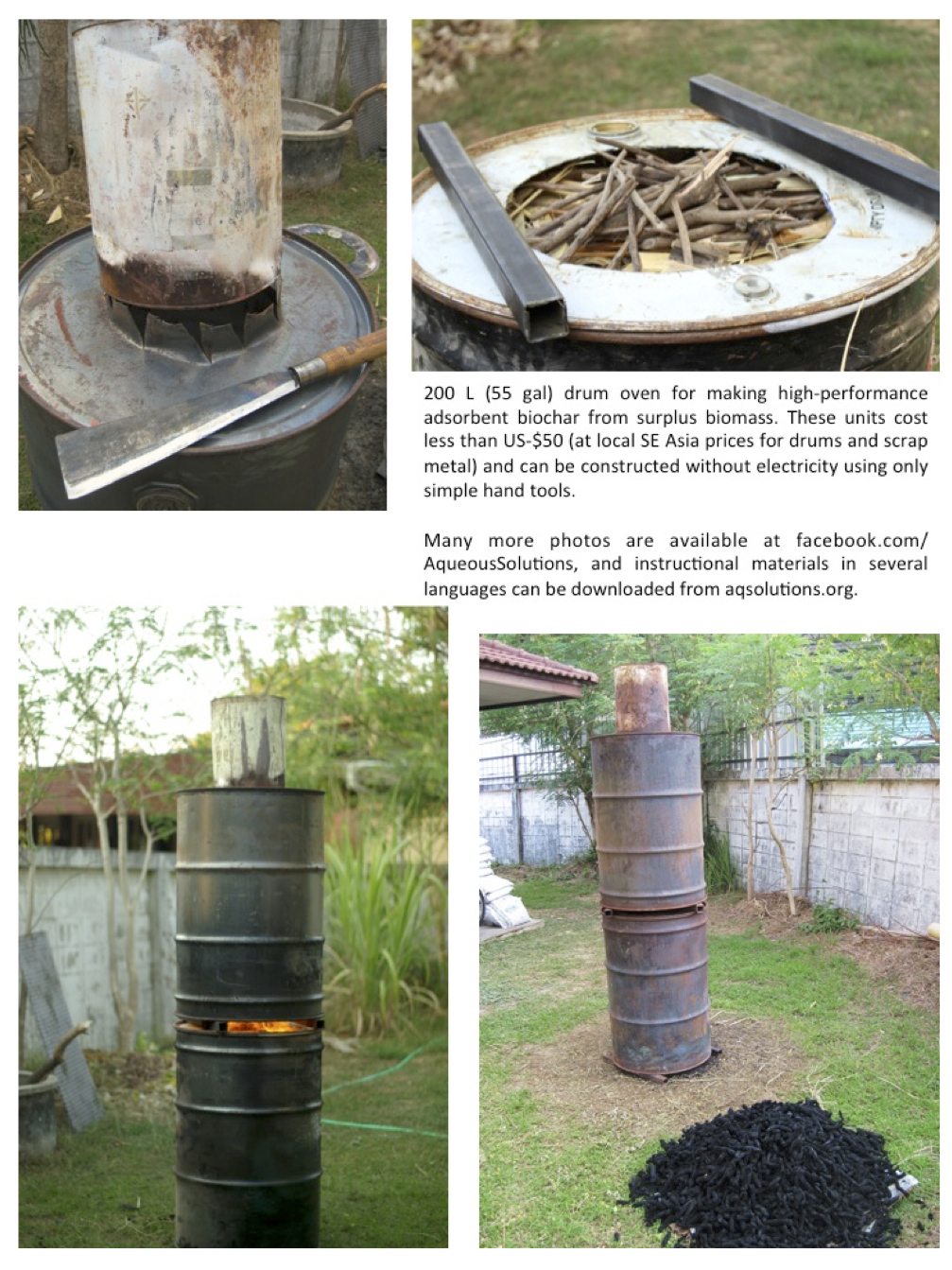
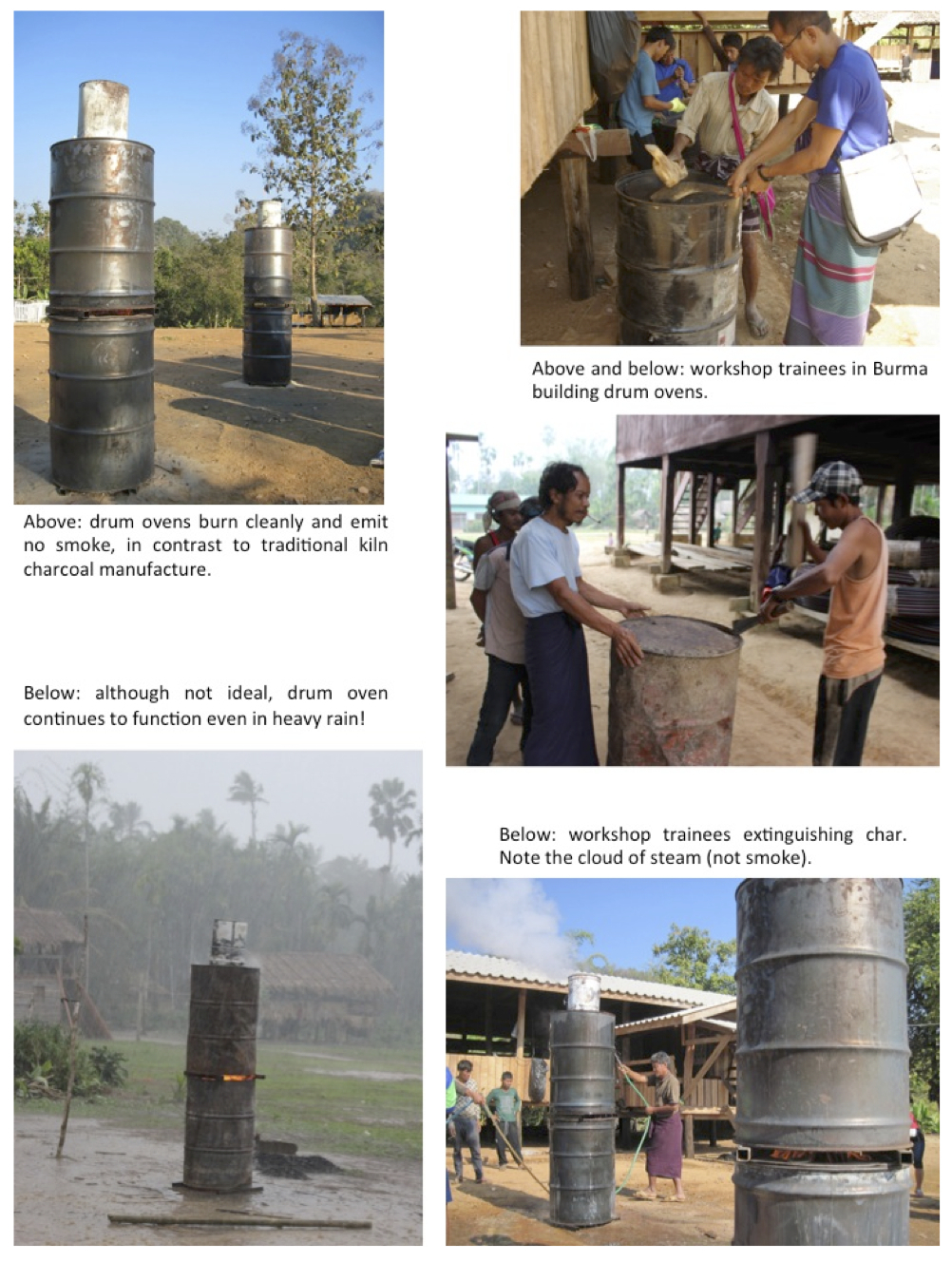
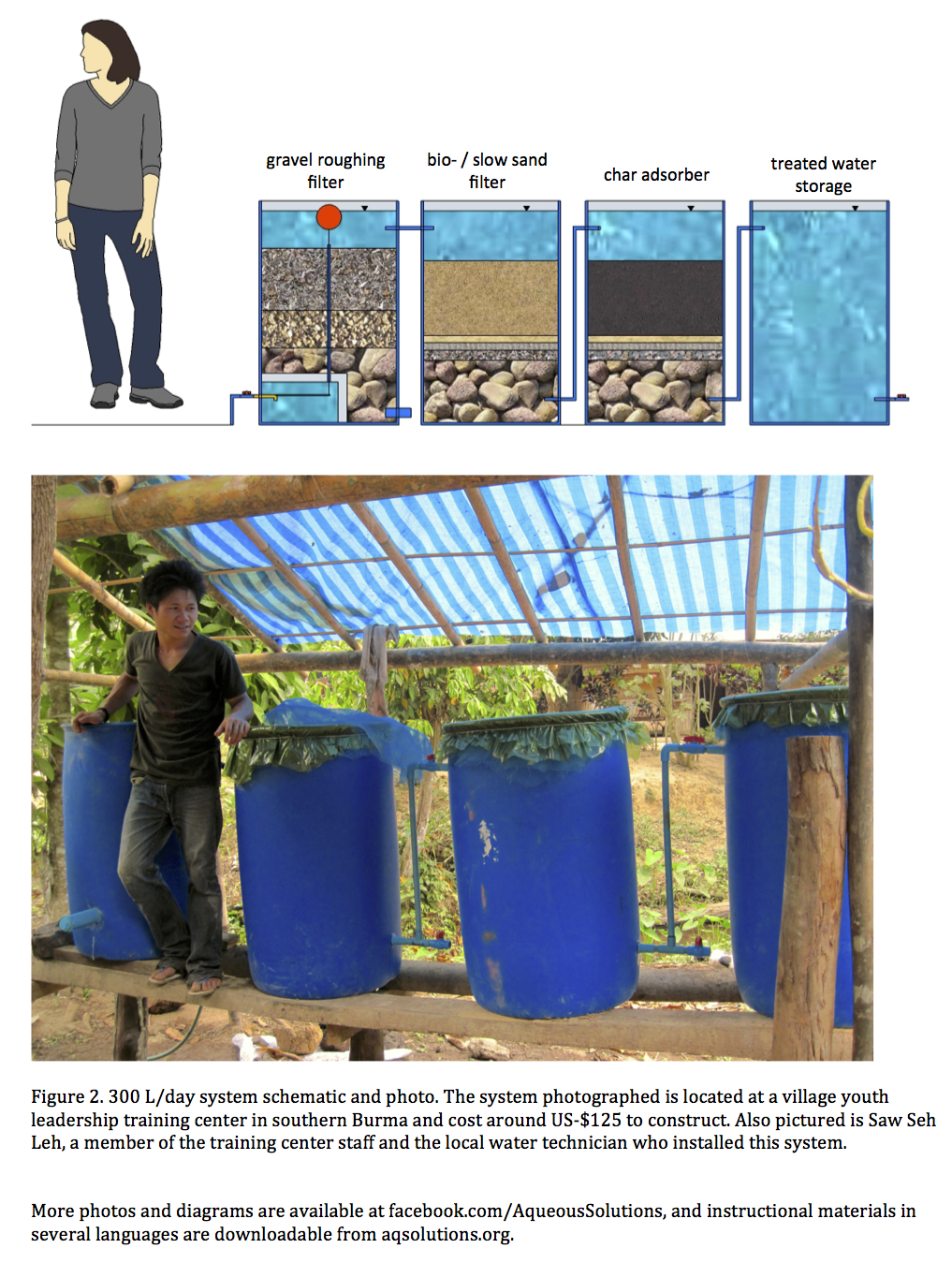
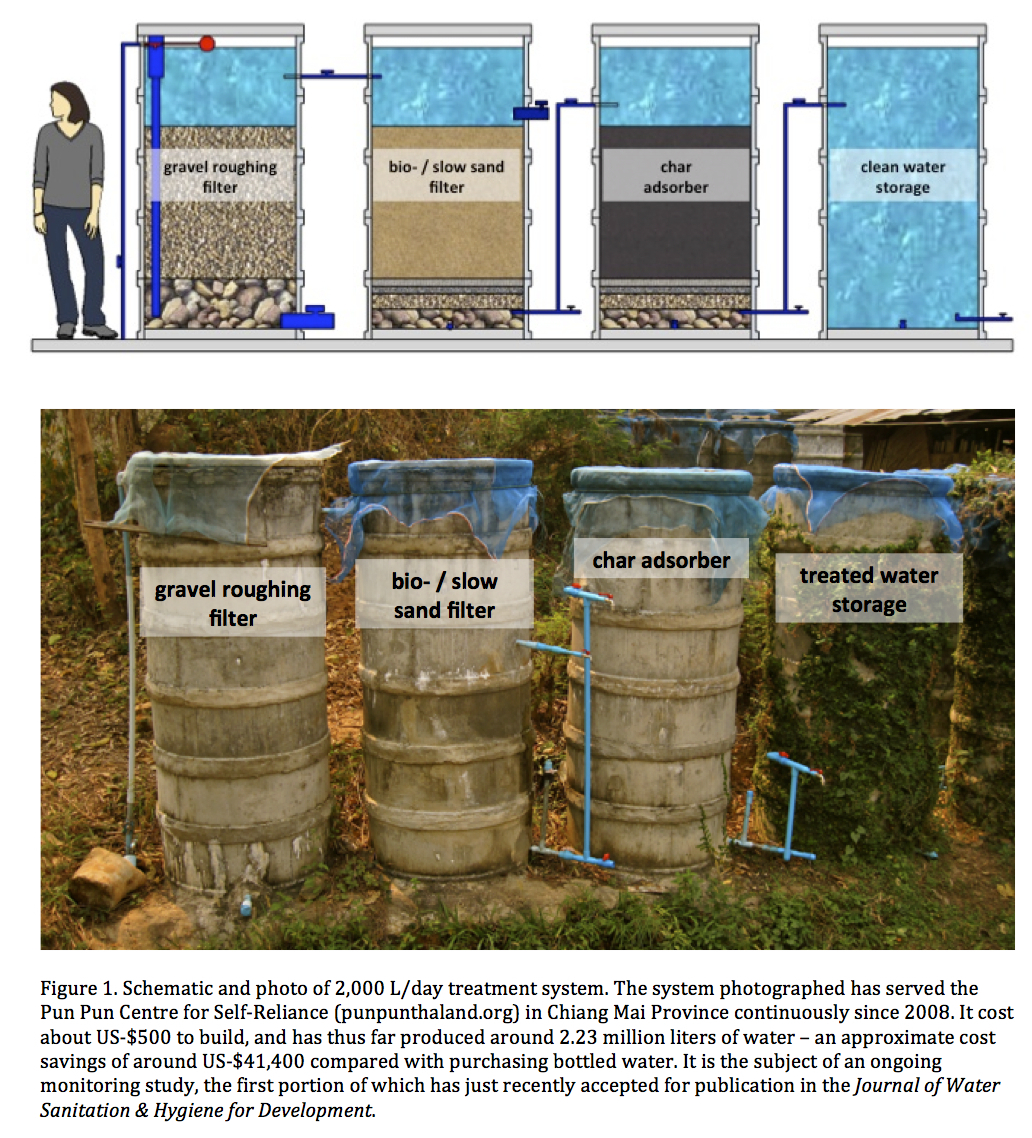
One of our trainees at a recent workshop in a village in eastern Burma:
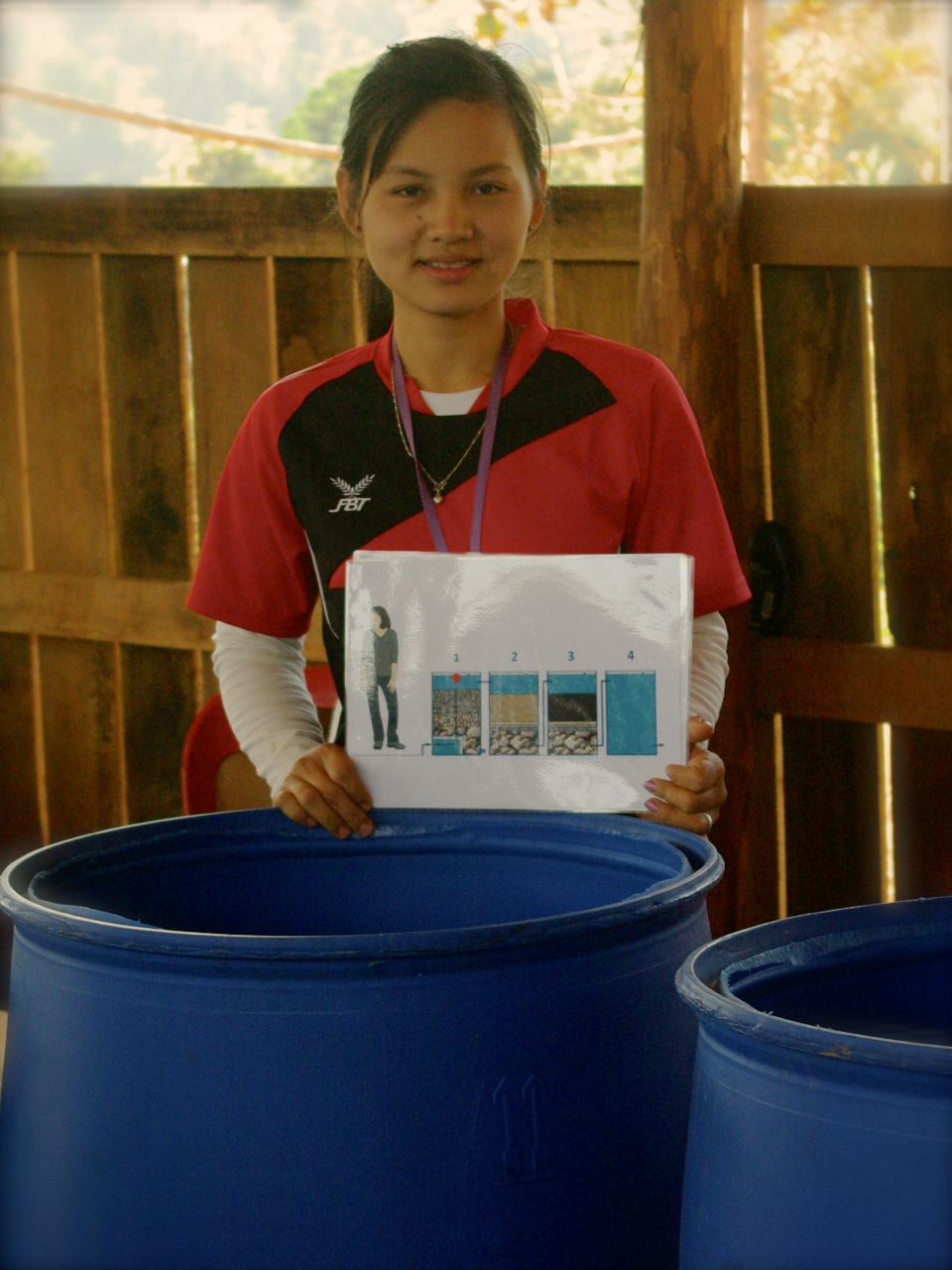
Banner image: Scanning electron micrograph of a grain of char made from longan wood by traditional method in northern Thailand. The scale bar = 500 micrometers (0.5 mm). Note the highly porous structure of the char, providing plenty of internal sites for sorption of water contaminants.
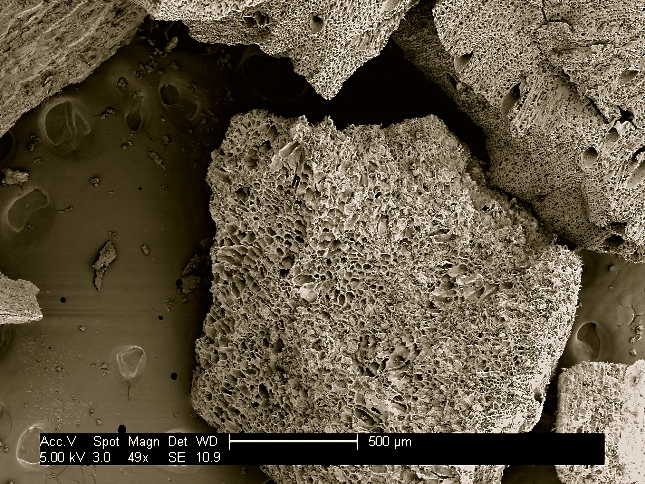
A heaping tablespoon of crushed high quality water treatment char can have an internal surface area as large as a football field!
Project Backers
- 32Backers
- 36%Funded
- $1,945Total Donations
- $60.78Average Donation
